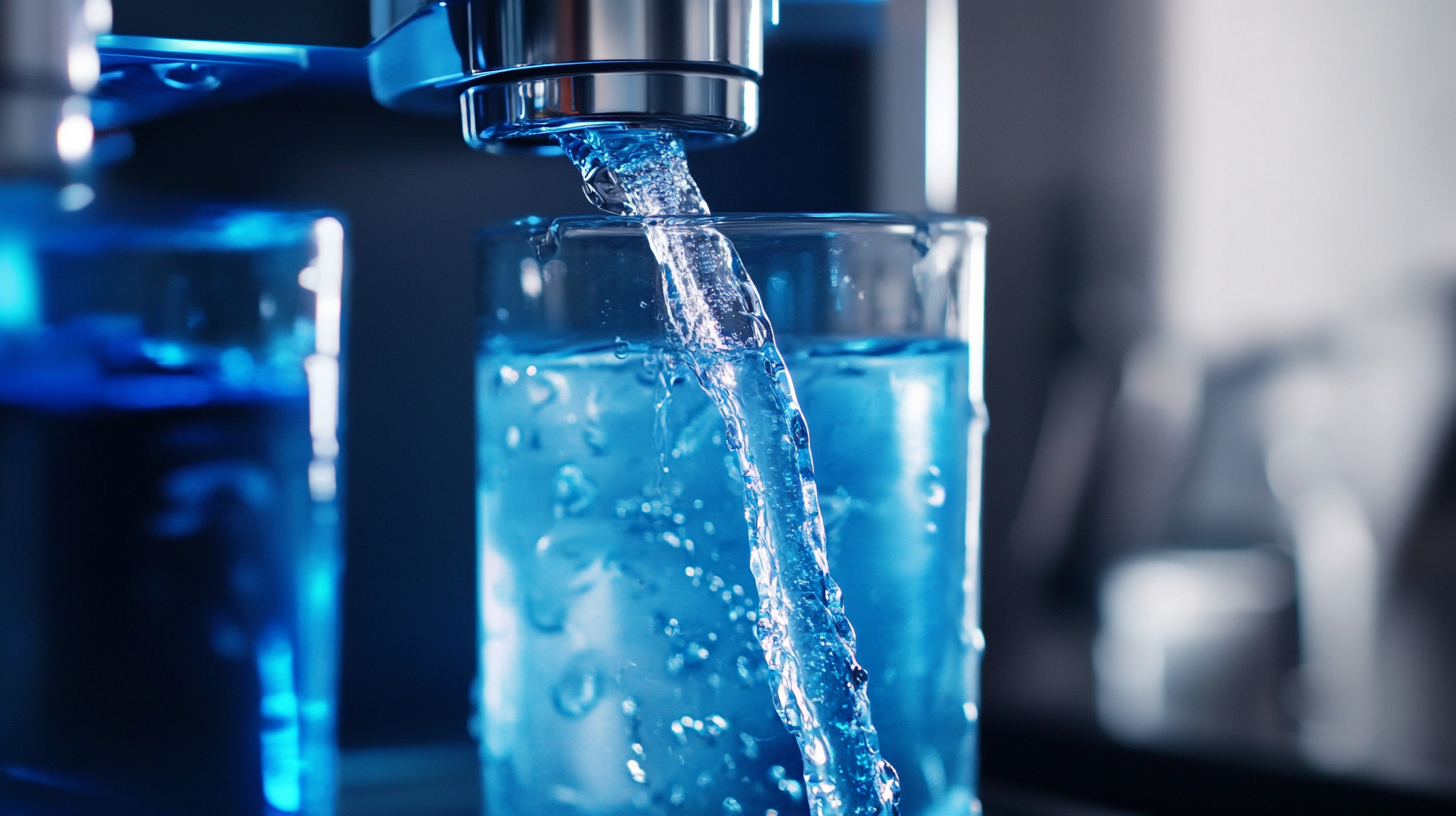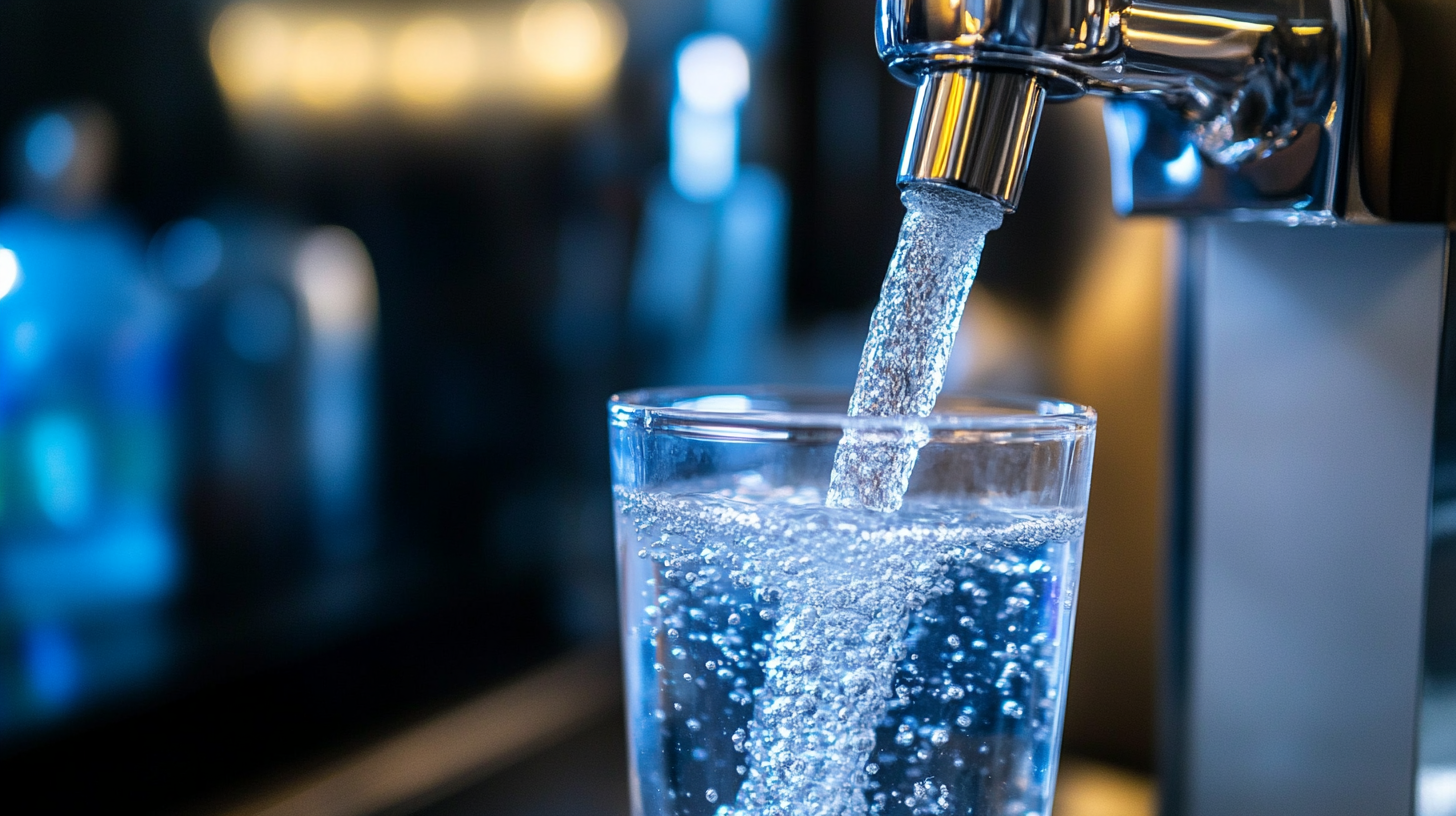
10 Pro Tips for Choosing the Best Water Dispenser for Your Home
When it comes to ensuring hydration and convenience in our households, a quality Water Dispenser is indispensable. Recent industry reports indicate that the global water dispenser market is expected to reach approximately $2.5 billion by 2026, reflecting a growing demand for efficient and stylish water solutions. As more consumers become conscious of their health and environmental impact, the preference for water dispensers has surged, leading to innovations in design and functionality. This blog will explore ten professional tips that will guide you in selecting the best water dispenser for your home, balancing aesthetics, efficiency, and health benefits, while emphasizing the importance of choosing products that are "精工细造,中国制造,服务世界"—representing the high-quality craftsmanship and reliability that Chinese manufacturers are renowned for worldwide.

Understanding Different Types of Water Dispensers: Which One Fits Your Needs?
When selecting the right water dispenser for your home, understanding the different types available is crucial for meeting your specific needs. There are primarily three categories to consider: bottled water dispensers, point-of-use (POU) dispensers, and countertop dispensers. Bottled water dispensers, which typically hold large water bottles, are favored for their convenience but can be costly over time. According to a 2022 report by the International Bottled Water Association, consumers in the U.S. spent over $18 billion on bottled water, emphasizing the popularity of this option among households.
Conversely, POU dispensers connect directly to your plumbing, offering an endless supply of filtered water while reducing plastic waste. A study from the Water Quality Association noted that POU systems can save families up to $2,500 over five years compared to bottled systems—making them a more sustainable, economical choice. Lastly, countertop dispensers are compact and easy to use, ideal for those with limited space. Evaluating these options based on your family's water consumption, budget, and environmental considerations will lead you to the dispenser that best fits your lifestyle.
Key Features to Consider: Size, Capacity, and Functionality in Water Dispensers
 When selecting the best water dispenser for your home, key features such as size, capacity, and functionality should be at the forefront of your decision-making process. First, consider the size of the dispenser. This is crucial, especially if you have limited space in your kitchen or utility area. Look for models that fit your designated area while still allowing for convenient access to water. Compact designs can maximize space without sacrificing performance.
When selecting the best water dispenser for your home, key features such as size, capacity, and functionality should be at the forefront of your decision-making process. First, consider the size of the dispenser. This is crucial, especially if you have limited space in your kitchen or utility area. Look for models that fit your designated area while still allowing for convenient access to water. Compact designs can maximize space without sacrificing performance.
Next, assess the capacity of the water dispenser. Do you have a large family that consumes a lot of water daily, or are you using it for a smaller household? Opt for a dispenser that can cater to your daily needs without constant refills. A higher capacity will save you time and ensure that you always have access to fresh water, especially during gatherings or hot days.
Finally, functionality is essential. Some dispensers offer additional features like hot and cold water options, built-in filtration systems, or even smart technology for efficiency. Look for a model that not only meets your hydration needs but also enhances your lifestyle with its features. Selecting a dispenser with the right combination of size, capacity, and functionality can greatly improve your home’s water experience.
Evaluating Energy Efficiency: How to Choose a Sustainable Water Dispenser
When selecting a sustainable water dispenser for your home, energy efficiency should be a top priority. With urban areas facing increasing challenges related to pollution and resource management, choosing a water dispenser that minimizes energy consumption can contribute significantly to a greener footprint. According to recent studies, energy and carbon budgets in agricultural systems illustrate an urgent need for sustainable practices; similarly, water dispensers that utilize renewable energy sources can play a pivotal role in optimizing resource use. For instance, devices like solar water evaporation systems can provide up to 2.5 liters of drinking water per square meter per day while using minimal energy, showcasing the potential for integrating renewable technologies in everyday appliances.
Moreover, a comparative analysis of sustainable building assessment systems highlights the importance of evaluating energy performance in all household appliances. The Efficiency Analysis Tree approach, which merges machine learning with conventional efficiency assessment techniques, can help homeowners identify water dispensers that not only reduce energy usage but also align with broader environmental goals. By focusing on products with proven energy efficiency ratings, consumers can support the sustainable development of water-energy and food systems—ultimately creating healthier urban environments.
Installing and Maintaining Your Water Dispenser: Tips for Longevity and Performance
When it comes to enjoying clean and refreshing water at home, the proper installation and maintenance of your water dispenser are crucial for ensuring optimal performance. Begin by placing your dispenser in a stable and cool area, away from direct sunlight and heat sources, as this can affect the temperature and quality of your water. Ensuring that the water bottles are properly sealed and securely mounted will also prevent leaks and spills, keeping your space tidy and safe.
Regular maintenance is key to extending the lifespan of your water dispenser. Be sure to clean the exterior and interior components regularly, including the drip tray, taps, and the water reservoir. Utilize a mixture of vinegar and water or a store-bought disinfectant to eliminate bacteria and odors. Additionally, it is essential to replace air filters and inspect any seals or gaskets for wear and tear periodically. Keeping your water dispenser in tip-top shape will not only improve the taste of your water but also provide you with peace of mind knowing that your hydration source is both safe and efficient.
10 Pro Tips for Choosing the Best Water Dispenser for Your Home - Installing and Maintaining Your Water Dispenser: Tips for Longevity and Performance
| Tip Number | Purpose | Details | Maintenance Frequency |
|---|---|---|---|
| 1 | Safety | Choose BPA-free materials to ensure safe drinking water. | Monthly |
| 2 | Size | Consider the available space in your home for a suitable size. | As needed |
| 3 | Type | Decide between point-of-use or bottled water dispensers based on your needs. | Annually |
| 4 | Cooling & Heating | Check if the dispenser has a quick cooling and heating mechanism for efficient use. | Bi-annually |
| 5 | Energy Efficiency | Look for energy-saving features to reduce electricity bills. | Monthly |
| 6 | Filtration | Assess the filtration system to ensure water quality. | Quarterly |
| 7 | Noise Level | Select a model that operates quietly. | As needed |
| 8 | User-Friendly Design | Choose a model with intuitive controls and easy access. | As needed |
| 9 | Aesthetic Appeal | Select a design that complements your home decor. | As needed |
| 10 | Cost | Evaluate the balance between features and price for value. | As needed |
Comparing Brands and Prices: Finding the Best Value for Your Water Dispenser
When searching for the best water dispenser for your home, it's essential to compare brands and prices effectively to find the best value. According to the Global Water Dispenser Market Report, the market is expected to grow at a compound annual growth rate (CAGR) of 4.8% from 2021 to 2028, reflecting an increasing demand for water dispensers across households. Major brands like Aquasana, Primo, and Avalon each offer a range of options, from point-of-use dispensers to bottled water systems. Understanding the features and prices associated with these brands will help you make an informed decision.
While assessing value, it's crucial to look at the total cost of ownership, which includes not just the purchase price but also ongoing costs like maintenance and filtration. Industry research indicates that bottled water dispensers typically incur higher recurring costs, with consumers spending an average of $130 annually on water refills. In contrast, point-of-use dispensers, although initially more expensive, can lead to significant savings in the long run, making them a more cost-effective solution. By comparing the total costs and benefits associated with different models, you'll be better positioned to select a water dispenser that fulfills your needs without compromising on budget.

